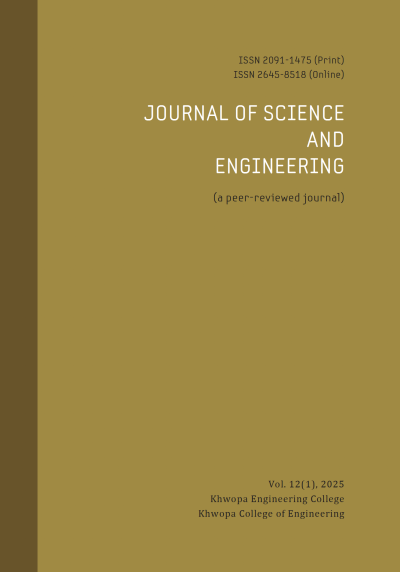Established in 2007 and hosted by Ubiquity.
Managed by Tribhuvan University Central Library.
Nepal Journals Online (NepJOL) is a service to provide online publication of Nepalese journals. For more information about NepJOL and how to join the service, see the About page.

The Journal of Science and Engineering (JScE) is a refereed journal to serve the interests of Professionals, academics and research organizations working in the field of science and engineering. It is published by the Khwopa Engineering College and Khwopa College of Engineering, Bhaktapur, Nepal
